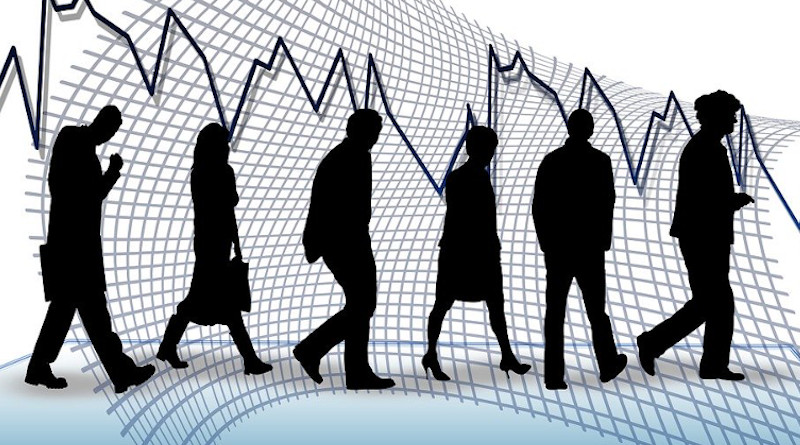White House Says US Jobless Rate Could Hit 25% Amid COVID-19
By VOA
By Ken Bredemeier
The official U.S. unemployment rate linked to the coronavirus pandemic is already at 14.7%, but top White House officials said Sunday they expect it could reach 25% before the world’s biggest economy begins to improve.
“The reported numbers are probably going to get worse,” before improving in the second half of the year and into 2021, Treasury Secretary Steven Mnuchin told “Fox News Sunday.”
He said the jobless rate could hit 25%, while White House economic adviser Kevin Hassett told CBS News’s “Face the Nation” show that he is expecting a jobless rate “north of 20,” with millions more laid-off workers filing for unemployment compensation in May and June.
The 14.7% rate announced Friday is the worst in the U.S. since the Great Depression in the 1930s, but Mnuchin said it is “no fault of American workers or business.
“We’ve closed down the economy,” he said, with massive layoffs in the hospitality, airline and restaurant businesses followed by more white-collar office job losses as the pandemic swept through wide swaths of the United States.
“We understand this impact,” Mnuchin said. “There’s going to be a very, very bad second quarter. Then I think you’re going to have a bounce back. I see the glass as half full, not half empty.”
Even so, the Congressional Budget Office is predicting a 9.5% jobless rate at the end of 2021, more than twice the low 4.4% rate before the coronavirus pandemic invaded the U.S. in March.
President Donald Trump, facing a re-election contest in November against former Vice President Joe Biden, has pushed to reenergize the country’s economy as quickly as possible, saying Friday, “We have to get our country open and we have to get it open soon.”
But U.S. health experts are continuing to warn against moving too quickly for fear it will lead to a resurgence in the spread of the virus as co-workers meet up again in workplaces. Trump has allowed that more deaths will occur, with the country’s death toll already approaching a world-leading 80,000.
Mnuchin said, “If we do this carefully, I don’t think there is a considerable risk. Businesses will be able to reopen. This is all being monitored very carefully.”
The U.S. has already authorized pumping more than $3 trillion into the economy, with assistance for unemployed workers and closed businesses. Some Democratic legislative opponents of the Trump administration are pushing for further assistance, but Mnuchin took a wait-and-see attitude.
“A lot of the money [already approved by Congress and Trump] is not into the economy yet,” Mnuchin said. “Before we jump back in, let’s make sure we do it carefully. We’re willing to do whatever it takes to help the American people.”
Hassett predicted that about another three million U.S. workers a week would file for unemployment benefits through the end of May. The country’s 50 states usually pay jobless benefit claims equaling not quite half what workers had been paid at their jobs. But during the pandemic, the U.S. government is augmenting that with $600-a-week stipends for the next four months.
“We understand why the economy is slowing down,” Hassett said. “And we expect that we can reverse it. Whereas in the Depression, there were a lot of other things, a lot of policy errors and so on, that made the whole thing drag out.
“So, I think if you look at the Congressional Budget Office, they currently forecast that the second half of the year will be one of recovery,” he said. “You know, God willing, that’s what’s going to happen. And I think that that’s the view that’s pretty much shared by the White House. And so I think you could expect to see jobs probably trough, you know, in May or June.”
But he also warned of the uncertainty facing the U.S. economy.
“Just like none of us really know when the virus is going to be either treatable or there’ll be a vaccine or, you know, it’ll be gone, in which case we could really just go back to our lives,” he said.“ But the fact is that if you think about the things that would happen that would make it hard to turn on the economy, that’s like bankruptcies and business failures and so on.
“The idea is to try to keep firms up and running, or maybe not running, but up, and connected with their workers so that when we turn the switch back on, they can get going right away,” Hassett said.
But he said that even with the massive infusion of cash into the economy already, “Nobody knows for sure whether it’s going to work.”

